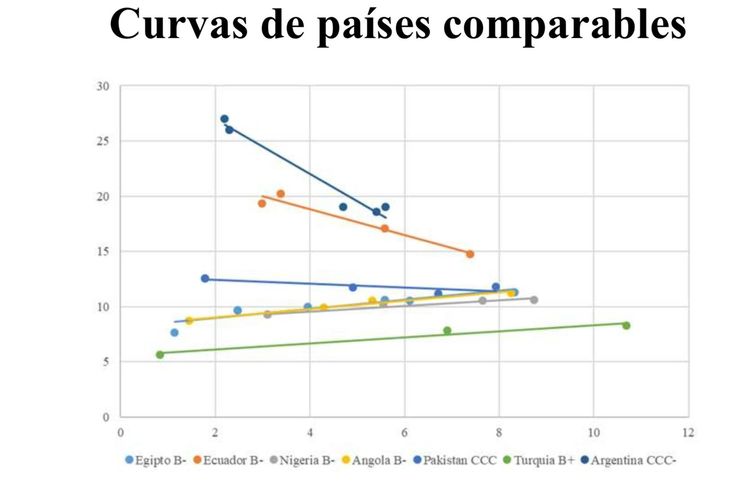This performance lowered the country risk by 35 basis points, which reached 1,498 units on Wednesday, piercing the 1,500 bp barrier. However, the question arises as to whether this phenomenon is due to blind trust in Javier Milei or if it reflects an optimism based on macroeconomics.
The fine adjustment carried out by the Government, which includes a marked reduction in interest rates and the lifting of restrictions in various marketsalong with measures aimed at combating inflation, generates enthusiasm in the market. Besides, inflation shows signs of slowing, with private estimates indicating that the core is around 10%. While The Central Bank (BCRA) continues its buying streak of dollars.
Another key factor of bond rally It is the fiscal consolidation achieved in January and that was extended to February. However, the main challenge here is the sustainability of these measures. Progress in reducing energy subsidies is also highlighted.
However, as pointed out Adcap Financial Group in its most recent report, “The market will soon begin to question the effectiveness of the Milei program” and doubts will be raised about whether he will be successful in implementing increases in energy rates and adjust pension formulas to guarantee a fiscal surplus that is sustained over time.
Bonds in dollars and optimism in the macro
On the other hand, on his last visit to the country, Morgan Stanley concluded that “Argentina’s macroeconomic stabilization is advancing rapidly.” For the financial entity, “the authorities are complying fiscal consolidation promises” and are “rebuilding the reserves” of the BCRA.
The financial giant estimates that if the Government manages to approve the tax bill, as well as “a new pension formula Argentina would not need to restructure its debt in 2025, “which leaves sovereign bonds in dollars very attractive.”
WhatsApp Image 2024-03-21 at 14.32.40.jpeg
For Morgan Stanley, “the main risk for dollar bonds is that the fiscal adjustment is not sustained and that all fiscal measures are rejected by Congress“. Likewise, he ensures that if the growth of the Central reserves does not reach US$12 billion in 2024, “probability of debt restructuring in 2025 increases“.
As explained the economist Federico Glustein to Ambit, “Hard dollar bonds are being boosted by the normalization of some macro variables.” Among which he mentions the fiscal and financial surplus, accumulation of reserves, payment of commercial debts, inflationary deceleration and as a potential, “the possibility of a source of financing to lift the stocks“.
Thinking about the horizon, Glustein maintains that one of the problems is that by postponing the rate increase, “there may be another inflationary jump which also results in a more appreciated exchange rate“and take the Government to a devaluation inevitable. For later and without stocks, consider that some exchange rate run could drain the dollars accumulated until then.
Fresh capital from abroad and signs of austerity
For Gustavo Neffa, Research for Traders partnerthe bond rally finds its base in “the willingness to pay on the part of the new Administration” and in “the need to rollover maturities in the distant future.”
For the economist, there is greater medium-term positioning by institutional investors from abroad and is emphatic in pointing out that “it is guided by the fact of having achieved primary and financial surplus both in January and February.” For Neffa, the Milei Administration is sending strong signals of fiscal and monetary austerity to investors, which is music to the market.
At the same time, the same thing stands out as Morgan Stanley and that Glustein opined, “reserves are increasing, which would soon cease to be negative in net terms; inflation, which appears to have peaked at 25% and has fallen to approximately 13% in February, a figure that is expected be similar in March,” he concludes.
The Fed and the impact on sovereign securities
Rafael Di Giorno, director of Proficio Investment, explains to this medium that what the Sovereign bonds They also receive a boost from the international context. “Yesterday’s Fed decision, especially Jerome Powell’s statement, with a flexible tone gave oxygen to national securities.”
WhatsApp Image 2024-03-21 at 14.32.42.jpeg

Di Giorno also highlights the fiscal result achieved by the Government, but raises doubts about the continuity of this fiscal surplus and states: “As the months go by and this becomes consolidated, the bonds will remain strong“.
Country risk: what its fall means and what is its impact
Glustein explains that the fall of risk country implies first that “borrowing for the country begins to be cheaper” but, furthermore, “that there is some confidence in the international market” about the plan being executed by the Government. “There is less risk of not paying obligations, although this has not yet been ruled out,” he maintains.
While, Leonardo Chialva, partner Delphos Investmentassures that “Argentina is managing to stabilize its economic situation and thus return to the international map“thanks to the economic program implemented by the current government.
However, he highlights that he still faces challenges and risks, such as unstable political situation and the need for improve governance. Chialva suggests that, to further reduce the risk countryit is crucial that Congress approve the laws and decrees necessary to strengthen political stability and improve the perception of governability.
“Although the economic plan has been effective in avoiding total collapse, a more solid political dynamic is required to achieve these advances and reduce the risk country at a desired level, estimated between 800 and 1,000 points“he concludes.
Source: Ambito
I am a 24-year-old writer and journalist who has been working in the news industry for the past two years. I write primarily about market news, so if you’re looking for insights into what’s going on in the stock market or economic indicators, you’ve come to the right place. I also dabble in writing articles on lifestyle trends and pop culture news.




